
Chapter 19
Earnings and Discrimination
TRUE/FALSE
1. A compensating differential refers to a difference in wages that arises from nonmonetary characteristics.
ANS: T DIF: 2 REF: 19-1
NAT: Analytic LOC: Labor markets TOP: Compensating differentials
MSC: Definitional
2. A compensating differential is a difference in wages due to higher levels of education or other forms of human
capital.
ANS: F DIF: 1 REF: 19-1
NAT: Analytic LOC: Labor markets TOP: Compensating differentials
MSC: Definitional
3. The fact that doctors are paid more than economics professors is an example of a compensating differential.
ANS: T DIF: 1 REF: 19-1
NAT: Analytic LOC: Labor markets TOP: Compensating differentials
MSC: Definitional
4. A computer is an example of productivity-enhancing human capital.
ANS: F DIF: 2 REF: 19-1
NAT: Analytic LOC: Labor markets TOP: Human capital
MSC: Definitional
5. Higher levels of human capital are correlated with higher earnings because firms are willing to pay more for
better-educated workers who have higher marginal productivities.
ANS: T DIF: 2 REF: 19-1
NAT: Analytic LOC: Labor markets TOP: Human capital
MSC: Interpretive
6. As a result of an increase in the earnings gap between skilled and unskilled jobs, the incentive to get a college
education has been declining.
ANS: F DIF: 2 REF: 19-1
NAT: Analytic LOC: Labor markets TOP: Increasing value of skills
MSC: Interpretive
7. The rising gap in wages between unskilled and skilled workers is most likely related to a larger increase in
demand for unskilled occupations relative to skilled occupations.
ANS: F DIF: 2 REF: 19-1
NAT: Analytic LOC: Labor markets TOP: Increasing value of skills
MSC: Interpretive
8. One hypothesis to explain the rising gap in wages between unskilled and skilled workers in the United States
is that international trade has altered the relative demands for skilled and unskilled workers.
ANS: T DIF: 2 REF: 19-1
NAT: Analytic LOC: Labor markets TOP: Increasing value of skills
MSC: Interpretive
9. The statement that "the rich get richer, and the poor get poorer" is supported by evidence of an expanding
wage gap between high-skill and low-skill workers.
ANS: T DIF: 1 REF: 19-1
NAT: Analytic LOC: Labor markets TOP: Increasing value of skills
MSC: Interpretive
7

8 Chapter 19/Earnings and Discrimination
10. Some economists suggest that international trade has led to an expanding wage gap between high-skill and
low-skill workers in the United States.
ANS: T DIF: 2 REF: 19-1
NAT: Analytic LOC: Labor markets TOP: Increasing value of skills
MSC: Interpretive
11. It is increasingly clear that technological change, rather than international trade, has been largely responsible
for an expanding wage gap between high-skill and low-skill workers.
ANS: F DIF: 2 REF: 19-1
NAT: Analytic LOC: Labor markets TOP: Increasing value of skills
MSC: Interpretive
12. The United States is losing manufacturing jobs to countries like China and India, where manufacturing jobs
have increased 30 percent since 1995.
ANS: F DIF: 2 REF: 19-1
NAT: Analytic LOC: Labor markets TOP: Increasing value of skills
MSC: Applicative
13. Since 1995, global manufacturing employment has declined, yet global industrial output has risen.
ANS: T DIF: 2 REF: 19-1
NAT: Analytic LOC: Labor markets TOP: Increasing value of skills
MSC: Applicative
14. One explanation for the loss in manufacturing jobs is that new technologies have replaced the need for some
workers.
ANS: T DIF: 2 REF: 19-1
NAT: Analytic LOC: Labor markets TOP: Increasing value of skills
MSC: Applicative
15. The demand for workers with excellent problem-solving skills is increasing, as are the wages for those
workers.
ANS: T DIF: 2 REF: 19-1
NAT: Analytic LOC: Labor markets TOP: Increasing value of skills
MSC: Applicative
16. One reason why better-looking workers may have higher earnings is that physical attractiveness may enhance
a worker’s productivity for certain jobs, especially for those workers who deal with the public.
ANS: T DIF: 2 REF: 19-1
NAT: Analytic LOC: Labor markets TOP: Beauty premium
MSC: Interpretive
17. One reason why better-looking workers may have higher earnings is that physical attractiveness is correlated
with intelligence.
ANS: F DIF: 2 REF: 19-1
NAT: Analytic LOC: Labor markets TOP: Beauty premium
MSC: Interpretive
18. The signaling theory of education maintains that workers who complete specific levels of education signal
their high productivity to potential to employers.
ANS: T DIF: 2 REF: 19-1
NAT: Analytic LOC: Labor markets TOP: Signaling
MSC: Definitional
19. The signaling theory of education maintains that workers who complete specific levels of education enhance
their productivity through education.
ANS: F DIF: 2 REF: 19-1
NAT: Analytic LOC: Labor markets TOP: Signaling
MSC: Definitional

Chapter 19/Earnings and Discrimination 9
20. If the signaling theory of education is correct, then education is correlated with higher earnings because people
with higher levels of education are more productive.
ANS: F DIF: 2 REF: 19-1
NAT: Analytic LOC: Labor markets TOP: Signaling
MSC: Interpretive
21. The human-capital theory of education maintains that workers who complete specific levels of education
enhance their productivity through education.
ANS: T DIF: 2 REF: 19-1
NAT: Analytic LOC: Labor markets TOP: Human capital | Signaling
MSC: Definitional
22. Education and on-the-job training are sources of human capital.
ANS: T DIF: 1 REF: 19-1
NAT: Analytic LOC: Labor markets TOP: Human capital
MSC: Applicative
23. The superstar phenomenon explains why professional athletes earn more than amateur athletes.
ANS: F DIF: 1 REF: 19-1
NAT: Analytic LOC: Labor markets TOP: Superstar phenomenon
MSC: Definitional
24. Superstars earn high incomes due to their ability to satisfy the demands of millions of people at once.
ANS: T DIF: 2 REF: 19-2
NAT: Analytic LOC: Labor markets TOP: Superstars
MSC: Interpretive
25. An effective minimum wage law will increase the quantity of labor demanded.
ANS: F DIF: 2 REF: 19-1
NAT: Analytic LOC: Labor markets TOP: Above-equilibrium wages
MSC: Applicative
26. Labor unions will raise the quantity of labor demanded.
ANS: F DIF: 2 REF: 19-1
NAT: Analytic LOC: Labor markets TOP: Unions
MSC: Applicative
27. Efficiency wages will raise the quantity of labor supplied to the market.
ANS: T DIF: 2 REF: 19-1
NAT: Analytic LOC: Labor markets TOP: Efficiency wages
MSC: Applicative
28. Efficiency wages decrease employee effort.
ANS: F DIF: 1 REF: 19-2
NAT: Analytic LOC: Labor markets TOP: Above-equilibrium wages
MSC: Interpretive
29. Efficiency wages decrease employee turnover.
ANS: T DIF: 1 REF: 19-2
NAT: Analytic LOC: Labor markets TOP: Above-equilibrium wages
MSC: Interpretive
30. Economic theory of labor markets suggests that wages are governed by labor supply and labor demand.
ANS: T DIF: 1 REF: 19-1
NAT: Analytic LOC: Labor markets TOP: Wages
MSC: Applicative

10 Chapter 19/Earnings and Discrimination
31. Empirical evidence suggests that ability, effort, and chance are not likely to be significant contributors to wage
differences.
ANS: F DIF: 1 REF: 19-1
NAT: Analytic LOC: Labor markets TOP: Wages
MSC: Interpretive
32. Discrimination is a reflection of some people's prejudice against certain groups in society.
ANS: T DIF: 1 REF: 19-2
NAT: Analytic LOC: Labor markets TOP: Discrimination
MSC: Definitional
33. Differences in human capital among groups of workers is possibly a reflection of past discrimination.
ANS: T DIF: 1 REF: 19-2
NAT: Analytic LOC: Labor markets TOP: Discrimination
MSC: Interpretive
34. Discrimination is an emotionally charged issue that is impossible to study objectively.
ANS: F DIF: 2 REF: 19-2
NAT: Analytic LOC: Labor markets TOP: Discrimination
MSC: Interpretive
35. When differences in human capital among workers lead to discrimination, the differences are typically a result
of social or political processes rather than economic processes.
ANS: T DIF: 2 REF: 19-2
NAT: Analytic LOC: Labor markets TOP: Discrimination
MSC: Interpretive
36. When comparing average wages for black and white workers in the United States, wages paid to black
workers have been about 20 percent less than those paid to white workers.
ANS: T DIF: 2 REF: 19-2
NAT: Analytic LOC: Labor markets TOP: Labor-market discrimination
MSC: Applicative
37. When comparing average wages for male and female workers in the United States, wages paid to females have
been about 40 percent less than those paid to male workers.
ANS: F DIF: 2 REF: 19-2
NAT: Analytic LOC: Labor markets TOP: Labor-market discrimination
MSC: Applicative
38. Politicians often point to average wage differentials as evidence of labor-market discrimination against ethnic
minorities and women; however, economists argue against this approach because they don't trust any of the
statistics quoted by the politicians.
ANS: F DIF: 2 REF: 19-2
NAT: Analytic LOC: Labor markets TOP: Labor-market discrimination
MSC: Interpretive
39. Politicians often point to wage differentials as evidence of labor-market discrimination against ethnic
minorities and women; however, economists argue against this approach because people differ in the kinds of
work they are willing and able to do.
ANS: T DIF: 2 REF: 19-2
NAT: Analytic LOC: Labor markets TOP: Labor-market discrimination
MSC: Interpretive
40. Economists would argue that the gender wage gap is narrowing because of efficiency wages.
ANS: F DIF: 2 REF: 19-2 | 19-1
NAT: Analytic LOC: Labor markets
TOP: Labor-market discrimination | Efficiency wages MSC: Interpretive

Chapter 19/Earnings and Discrimination 11
41. All differences in wages that are not accounted for by differences in human-capital investment are likely to be
a result of discrimination.
ANS: F DIF: 2 REF: 19-2
NAT: Analytic LOC: Labor markets TOP: Labor-market discrimination
MSC: Interpretive
42. In a labor market free from discrimination, wages for workers that are employed by the same company will
still differ.
ANS: T DIF: 2 REF: 19-2 | 19-1
NAT: Analytic LOC: Labor markets
TOP: Labor-market discrimination | Human capital MSC: Interpretive
43. Evidence of discrimination is most apparent when one compares wages among broad groups.
ANS: F DIF: 2 REF: 19-2
NAT: Analytic LOC: Labor markets TOP: Labor-market discrimination
MSC: Interpretive
44. When discrimination occurs as a result of prejudice, firms do not maximize profits.
ANS: T DIF: 2 REF: 19-2
NAT: Analytic LOC: Labor markets TOP: Labor-market discrimination
MSC: Interpretive
45. Consumers are often a primary source of discrimination in labor markets.
ANS: T DIF: 2 REF: 19-2
NAT: Analytic LOC: Labor markets TOP: Labor-market discrimination
MSC: Interpretive
46. Discrimination is usually not a profit-maximizing strategy.
ANS: T DIF: 2 REF: 19-2
NAT: Analytic LOC: Labor markets TOP: Discrimination
MSC: Interpretive
47. One example of labor-market discrimination is that firms may be less likely to interview job-market
candidates whose names suggest that they are members of a racial minority.
ANS: T DIF: 2 REF: 19-2
NAT: Analytic LOC: Labor markets TOP: Labor-market discrimination
MSC: Interpretive
48. If people with blue eyes earn more than people with brown eyes, we have proof of discrimination against
people with brown eyes.
ANS: F DIF: 2 REF: 19-2
NAT: Analytic LOC: Labor markets TOP: Discrimination
MSC: Interpretive
49. Profit-maximizing, competitive firms will not discriminate in the hiring of workers unless consumers exercise
a preference for discrimination in product markets or governments mandate discrimination.
ANS: T DIF: 2 REF: 19-2
NAT: Analytic LOC: Labor markets TOP: Labor-market discrimination
MSC: Interpretive
50. Streetcar owners in the early 20th century were against segregation for profit maximizing reasons.
ANS: T DIF: 2 REF: 19-2
NAT: Analytic LOC: Labor markets TOP: Discrimination
MSC: Interpretive
51. Experimental evidence indicates women choose less competitive environments than men.
ANS: T DIF: 2 REF: 19-2
NAT: Analytic LOC: Labor markets TOP: Gender differences
MSC: Interpretive



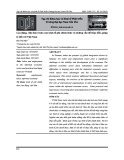
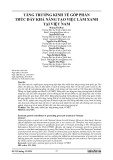
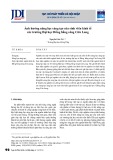

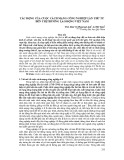
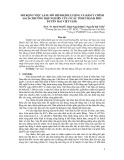
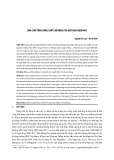
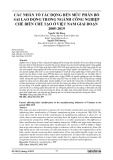


![Bài tập Kinh tế vi mô kèm đáp án [chuẩn nhất]](https://cdn.tailieu.vn/images/document/thumbnail/2025/20250923/thaovu2k5/135x160/19561758679224.jpg)












